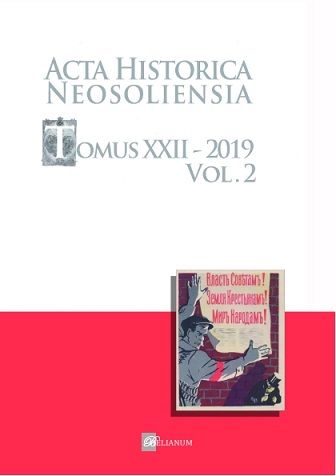„Opus pulchrum“. Pôsobenie Spoločnosti Ježišovej v Banskej Bystrici (1648 – 1773) v kontexte umeleckých objednávok pre tamojšiu komunitu
„Opus pulchrum“. Activities of the Society of Jesus in Banská Bystrica (1648–1773) and the Works of Fine Art and Architecture for Local Community
Author(s): Barbara HodásováSubject(s): Cultural history, Architecture, Visual Arts, Local History / Microhistory, Social history, 17th Century, 18th Century, History of Art
Published by: Filozofická fakulta Univerzity Mateja Bela
Keywords: East Central Europe; Habsburg Empire; Austrian Province of the Society of Jesus; Paul Shore; Baroque art and architecture in Central Europe; art patronage;
Summary/Abstract: A book from the Anglo-American environment by the respected Canadian historian Paul Shore with the title Narratives of Adversity: Jesuits in the Eastern Peripheries of the Habsburg Realms (1640 – 1773) can be regarded as the starting point for my study. The book made a significant impact on the academic community, especially in the English speaking countries. Shore’s work presents a narrative of the activity of the Society of Jesus in the former Kingdom of Hungary during the Early Modern period, and is based mainly on the stories of specific members of the order, or minor stories and curiosities, especially „in the peripheries of the Habsburg Realms”. Since I very strongly disagree with the conception of Paul Shore’s work, the study is an attempt to create a parallel narrative on the activities of the Society of Jesus in Banská Bystrica in the period 1648 – 1773. The sources for this concept were detailed research on the textual sources both in local archives and in the Archivum Romanum Societatis Iesu Roma, as well as investigation of the surviving visual works from the categories of fine art and architecture in relation to my professional profile. Such a concentrated view and the partially uncovered realities of the activities of the Society of Jesus in Banská Bystrica made Paul Shore’s articulated and constantly mentioned „Eastern peripheries of the Habsburg realms” and the adversities of members of the order look ever more indefensible. Various visual traces of the activities of the Jesuits in Banská Bystrica can be described as significant Baroque works created in the international Central European framework thanks to various patrons from various European regions. They undoubtedly represent the successful construction of a Central European Baroque sacred landscape and the visual identity of the Catholic space of the Habsburg Monarchy.
Journal: Acta historica Neosoliensia
- Issue Year: 22/2019
- Issue No: 2
- Page Range: 102-185
- Page Count: 84
- Language: Slovak

